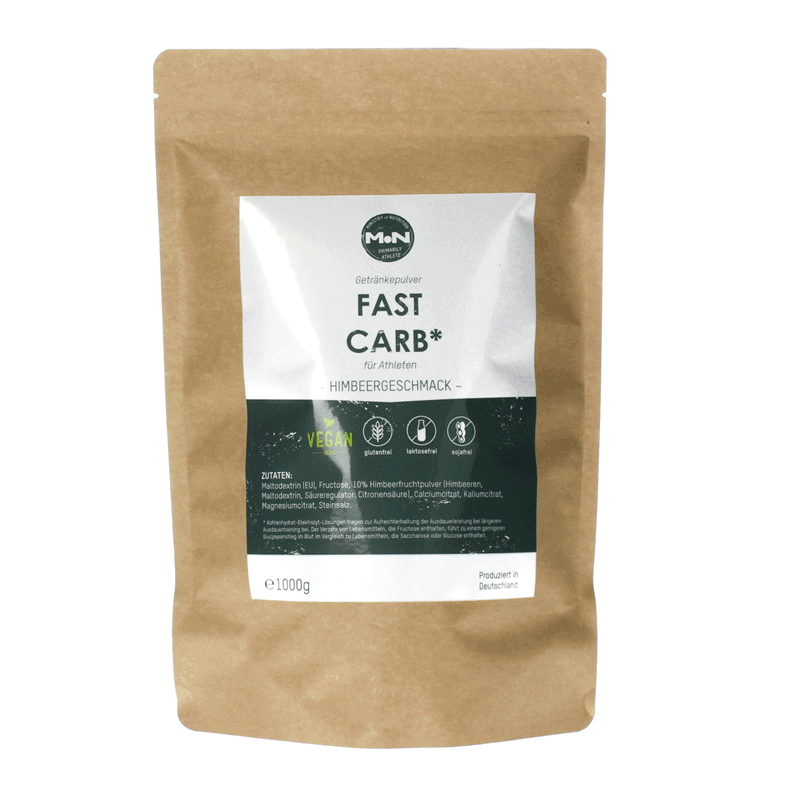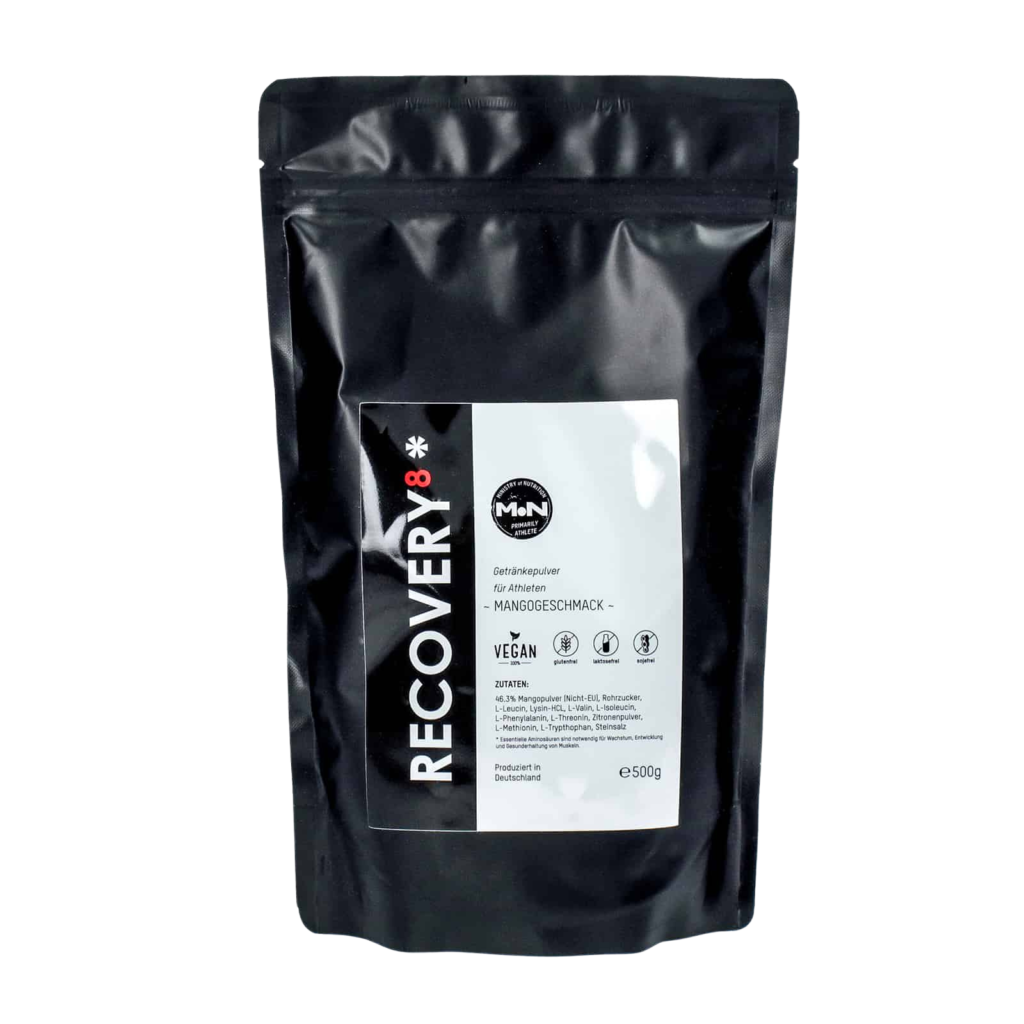This is how a lack of energy affects training
If the body has little energy available over long periods of time, this is also referred to as low energy availability – a chronic energy deficit. Those athletes consume more energy over a longer period of time than they supply. This has a negative impact on health and performance.
A chronic energy deficiency upsets hormone balance, neuromuscular functions are impaired, and bone density can decrease. These factors increase the risk of fractures. Furthermore, the muscle mass decreases and the susceptibility to infections can increase.
So it was shown in a study that athletes*Innen with an energy deficit are absent significantly more often in training due to illness. Those affected >22 days absent due to illness alone, plus breaks due to injury. [1]
Such frequent absence from training inevitably affects performance.
Besonders betroffene Sportler*Innen
Übersetzt mit www.DeepL.com/Translator (kostenlose Version)
Affected by an energy deficit are significantly more athletes than one thinks. Recent data speak of 22-58% affected. With collection of these data many different kinds of sport were considered, likewise both men and women were included.
It is to be recognized clearly that perseverance sportsmen*Innen are more frequently concerned than strength sportsmen*Innen. But also dancers and gymnasts represent a risk group.
A particularly vulnerable group is the so-called “college-aged population” – i.e. adolescents. Overall, women and girls suffer from an energy deficit slightly more often than men. However, male athletes are also affected more often than previously thought. [1]
5 tips to keep your athletes energized through the (training) day
1. athletes should use breakfast for energy supply

Many athletes* have made it a habit not to eat breakfast. This can have various reasons, however, it is not recommended at all.
A rich breakfast offers a good opportunity to supply a basic stock of energy. If you miss this chance and have a high energy consumption due to training and everyday life, you will probably not be able to meet the demand by the end of the day.
Furthermore, it has been shown that breakfast can help improve the regulation of blood sugar in the afternoon. Also, breakfast helps you be more active and motivated throughout the rest of the day. [2]
What should breakfast look like?
There is no gold standard for the perfect breakfast. The key is to consider what is done after breakfast and how the choice of breakfast can support this.
Young athletes who go to school after breakfast should optimally go for complex carbohydrates. These are digested more slowly and thus provide long-lasting energy. In such a case, for example, a millet porridge with healthy berries could be eaten.
If, on the other hand, a workout is done after breakfast, it is better to fall back on easily digestible, quickly available carbohydrates. Due to the simple chemical structure, these are digested more quickly, so the energy is available more quickly and the carbohydrates are better tolerated.
A breakfast before a hard workout could be, for example, a porridge (cooked with water or almond milk) or a spelt bread with jam or honey. If it should not go out for Athlet*Innen to have breakfast before the training extensively, at least still a bar and/or a banana offers itself.
It is important that the bar is well compatible. In principle, natural products with few additives are best digestible. For example, our PORRIDGE BAR from Ministry of Nutrition would offer itself. This can also be eaten a relatively short time before the start of a workout, thus avoiding a fasting workout.
.
2. Adapts the carbohydrate intake to the workout

The intensity of the workout is the decisive factor here. If a key training is on the program, energy should be supplied regardless of the duration of the training. If on the other hand only loosely trained, no energy must be supplied with units under 60 minutes.
Naturally, the supply must also be adapted to the type of sport. While at the wheel very simply carbohydrates can be supplied, that is somewhat more difficult during running by the constant impact load. You can find out more details about the optimal supply in the various sports in our KNOWLEDGE CENTER.
The most important thing with the energy supply during training is that the products are well tolerated and are available quickly or slowly depending on the training goal.
Intense units
Recommendations for intense units range from 60 to 120g of carbohydrates per hour – this is individual and varies depending on the load.
For running workouts, the supply of 60-70g/h is suitable, on the bike even 100 to 120g can be taken. However, this is not so simple. To avoid potential problems, the intake of such high amounts should be trained and individually optimized.
For a high energy intake to succeed at all, the right carbohydrate sources must be combined and optimal tolerance must be given. These two characteristics combine FAST CARB, our classic training sports nutrition product.
Example food for a hard workout:
Add 35-40g FAST CARB to 500ml of water. Per hour of training, 1 serving should be consumed (1-2 on the bike), with no more than 4 servings total (bike max 8).
For those who want something solid in addition, a PORRIDGE BAR works well with the FAST CARB to further increase carbohydrate intake.
Loose sessions
In order to achieve an overall energy balance, energy intake is also important during loose sessions. Let’s think, for example, of triathletes who train up to three times a day and consume a lot of energy even during moderate units.
In contrast to intensive loads, loose units do not require such high amounts of energy. It’s also less important that the energy be available immediately.
If carbohydrates are released slowly into the blood, this can help lower the rate of lactate formation and promote fat metabolism during casual workouts, for example (you can learn more about this HERE). SLOW CARB is ideal for this and is particularly popular with many top athletes.
Example rations for casual sessions:
30-35g SLOW CARB in 500ml of water. Depending on the temperature, the amount of liquid can also be increased to 1,000ml.
In total, no more than 3 servings should be consumed (1 serving/h). Especially if an athlete should be on the road for a long time, further energy needs can be excellently covered by a PORRIDGE BAR per training hour.
.
3. Let your athletes snack quietly

In order to meet the high energy needs of athletes, it is also necessary to eat something between meals. Especially for working athletes, this is essential, as there is often a large time gap between the main meals.
What is best consumed during such snack units depends on the situation. Basically, snacks offer a good opportunity to supply fruits and vegetables – and thus important fiber and protective substances.
In the main meals before training sessions, fiber is often avoided because it tends to be poorly tolerated. Overall, however, the intake of dietary fiber is important because it has numerous health-promoting properties.
So in snacks that are relatively far away in time from the workout, these substances can be well incorporated. Well suited for a snack are, for example, nuts and seeds. They do not provide so many carbohydrates, but still have a high nutrient density and important fats for metabolism and regeneration.
So a snack could be, for example:
- Yogurt with fruit
- Carrot with nuts
- A small sandwich with avocado and vegetables
As a snack close in time to the workout is recommended, for example, a banana and / or a bar. Also corn or rice wafers with almond paste and / or jam (small amounts) could be used before training as an energy supplier.
.
4. Help your athletes to recover

The diet also plays a special role after training or competition. A rapid energy supply best 30-60 minutes after physical exertion promotes regeneration and supports the immune defense.
For optimal regeneration, the combination of 0.8g carbohydrates per kg body weight and 0.2-0.4g protein per kg body weight is recommended. [4]
This combination is most easily ingested through a shake. Our RECOVERY SHAKE contains quickly available carbohydrates as well as high-quality proteins – it also contains ideal amounts of glutamine and leucine (amino acids), which enable optimal adaptation to the training stimulus.
Glutamine also supports the immune system. This is particularly important after training, because athletes* come after strenuous exercise in a so-called post-exercise immune function depression. [3] During this time, they are therefore particularly at risk of infection and illness, which is why the supply of glutamine is beneficial.
After units with heavy muscular stress, it is also important to supply as many essential amino acids as possible to ensure optimal muscle recovery.
In our RECOVERY 8, all 8 of the essential amino acids are contained in an optimal ratio. The amino acid blend is derived from fermented vegetables and offers true plant power in addition to essential amino acids.
After particularly stressful key units, for example, our RECOVERY 8 could be drunk and half an hour later still our RECOVERY SHAKE. This provides optimal protection against injuries and optimally promotes muscular as well as general recovery.
5. The right meal in the evening

At dinner, care should be taken to consume natural antioxidants. These protective substances help the body to fight against free radicals. Since regular physical exertion causes a lot of oxidative stress, the supply is particularly important for athletes*Innen.
It is Vorteilhalft if these substances come from natural sources such as fruits and vegetables. It was shown that the adaptation to the training stimulus in contrast to artificial antioxidants (such as high doses of vitamin C or vitamin E) is positively influenced by natural protective substances.
It could be eaten, for example, a chicken breast sautéed in some olive oil with sweet potato puree.
The carbohydrate content of the evening meal is optimally adapted to the training of the following day. If an intensive training stands, should be eaten as carbohydrate-emphasized as possible.
If, on the other hand, loosely trained the next day, the dinner can be made somewhat more fat- and protein-containing, in order to support a possible adaptation of the fat metabolism.
This guest post comes from Ministry of Nutrition. The new, vegan sports nutrition brand provides many athletes from the top sports with the necessary power in their training sessions and competitions. All Ministry of Nutrition products are natural, healthy and optimally compatible – which is also why we have integrated them into the Azum database.
All info on the individual products is available at ministry-of-nutrition.com.
You can find even more tips on training & nutrition at training.ministry-of-nutrition.de.
Sources:
[1] D. M. Logue et al., “Low energy availability in athletes 2020: An updated narrative review of prevalence, risk, within-day energy balance, knowledge, and impact on sports performance,” Nutrients, vol. 12, no. 3, pp. 1-19, 2020, doi: 10.3390/nu12030835.
[2] J. A. Betts, E. A. Chowdhury, J. T. Gonzalez, J. D. Richardson, K. Tsintzas, and D. Thompson, “Is breakfast the most important meal of the day?,” Proc. Nutr. Soc., vol. 75, no. 4, pp. 464-474, 2016, doi: 10.1017/S0029665116000318.
[3] N. P. Walsh et al., “Position statement part one: Immune function and exercise,” Exerc. Immunol. Rev., vol. 17, pp. 6-63, 2011.
[4] DOSB (German Olympic Sports Confederation, Competitive Sports Division) brochure “Nutritional supplements,” 1st edition June 2014
.